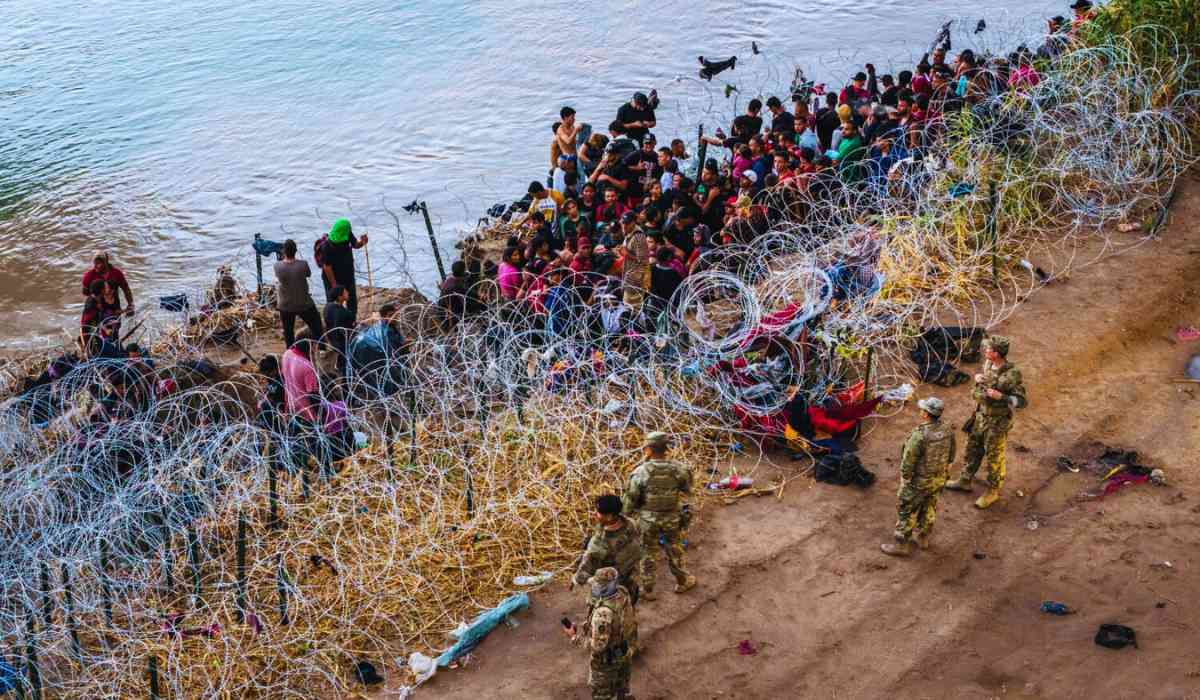As the ongoing migrant crisis continues to unfold, tensions along the Texas-Mexico border have reached a boiling point, marked by escalating confrontations between state and federal authorities. The situation has drawn national attention, particularly in Eagle Pass, Texas, where recent policy changes and tragic incidents have highlighted the complexities of border security.
Eagle Pass: A Flashpoint of Conflict
Eagle Pass has emerged as a focal point in the dispute over border enforcement strategies. On January 10, Texas authorities effectively blocked U.S. Border Patrol agents from a 2.5-mile stretch of the border, including Shelby Park—a popular crossing area—by erecting fencing and razor wire. This action has raised concerns about access for federal agents during a time of increased migrant crossings. Tragically, just days later, two children and their mother drowned in the Rio Grande near this area, prompting accusations from both state and federal officials regarding responsibility for the incident.
Operation Lone Star's Expanding Role
Texas Governor Greg Abbott's "Operation Lone Star," which has allocated over $11 billion since its inception in 2021, aims to bolster state-led border security efforts. The operation has seen thousands of police and military personnel deployed to deter illegal crossings, with Abbott asserting that every area used by cartels will be barricaded to prevent entry[8]. Despite these measures, reports indicate that only about 175 miles of the extensive 1,254-mile Texas-Mexico border is currently fortified.
Contrasting Narratives Amidst Relative Calm
Recent analyses have revealed a stark contrast between political rhetoric and the realities on the ground. A joint investigation by The Texas Tribune and The Associated Press documented a day along the border where agents patrolled vast stretches without encountering migrants. This observation coincides with a significant drop in migrant crossings, attributed to both U.S. and Mexican enforcement actions. However, this relative calm does not align with the urgent narratives presented by political leaders campaigning on immigration issues.
Security Measures Intensified Ahead of Trump's Inauguration
In anticipation of Donald Trump's inauguration on January 20, security measures have been heightened on both sides of the border. Mexican authorities recently announced plans to seal a concealed tunnel used for trafficking migrants and goods between Ciudad Juárez and El Paso. This tunnel's discovery underscores ongoing concerns about smuggling operations that exploit vulnerabilities in border security.
How effective are the current border barriers in preventing illegal crossings?
The effectiveness of current border barriers in preventing illegal crossings remains a complex and debated topic. Here are key insights based on recent research and statistics:
Reduction in Illegal Crossings
- Significant Decrease: Research indicates that border barriers have contributed to substantial reductions in illegal crossings. For instance, after the installation of fencing in Yuma, Arizona, apprehensions dropped by as much as 90% in the area1. Similarly, the Secure Fence Act of 2006 led to a 39% decline in migration among Mexicans living near the border.
- State-Level Success: Texas reports an 86% decrease in illegal crossings attributed to its Operation Lone Star, which combines state and federal efforts to enhance border security.
Challenges and Limitations
- Shifting Migration Patterns: While barriers can deter crossings in specific areas, they often shift migration flows to more remote and dangerous regions. This has been observed as migrants and smugglers adapt to increased enforcement by seeking alternative routes, particularly through perilous deserts.
- Asylum Seekers: The demographics of migrants have changed significantly, with a growing number seeking asylum due to violence and instability in their home countries. This group is often harder to deter, as many have legitimate claims for protection under U.S. law.
Mixed Effectiveness
- Not a Complete Solution: Experts argue that while physical barriers can be effective in certain contexts—especially when combined with robust law enforcement—they are not a standalone solution. The U.S.-Mexico border is extensive (nearly 2,000 miles), and barriers cover only about one-third of this length. Thus, unauthorized crossings continue despite existing barriers.
- Deterrent Effects: Some studies suggest that while barriers do discourage unauthorized entry, their effectiveness diminishes over time as smugglers and migrants find new ways to circumvent them. For example, the likelihood of apprehension has increased slightly, but this has not fully deterred attempts at crossing
Conclusion: A Complex Landscape Ahead
As the situation at the Texas-Mexico border evolves, it remains clear that the interplay between state initiatives like Operation Lone Star and federal policies will continue to shape the landscape of immigration and security. With political stakes high and humanitarian concerns at play, the coming months will be critical in determining how these tensions are resolved and what impact they will have on those seeking refuge across the border.
With inputs from agencies
Image Source: Multiple agencies
The views expressed are personal to the author and do not reflect the platform's opinion of the same.
© Copyright 2024. All Rights Reserved Powered by Vygr Media.

























